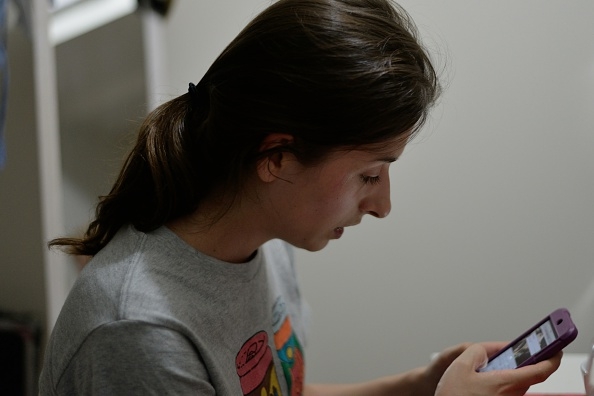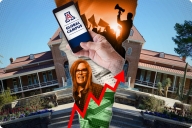You have /5 articles left.
Sign up for a free account or log in.

Getty Images
Social media use and text messaging aren’t leading college students to ignore email, according to a new study. But that doesn’t mean students read every email they get.
Those findings come from Bowling Green State University, where researchers in April surveyed 315 students in a variety of majors about their email, social media and text messaging habits. The survey results suggest relying on email to reach students about important issues could lead to a “disconnect” between a college and its students.
Some faculty members, fed up with students not responding to or simply not reading important emails, are considering using different channels of communication to avoid that disconnect. While some faculty members are hesitant to contact students on whichever social media platform is in vogue, others have explored texting as an alternative to email.
The paper, which is being presented at next month’s Information and Telecommunications Education and Research Association conference, also recommends colleges should consider using texting and social media platforms to reach students. However, the findings still suggest email can be an effective method of communication.
“Campus and student media certainly are a positive force to facilitate campus involvement,” the paper reads. “This study provides the empirical evidence that these campus media are crucial to the building of a university community.”
First the good news: 85 percent of Bowling Green students said they check their university email every day, and if they find a message from a faculty member, they are highly likely to read it. Only 11 percent of surveyed students said they sometimes, rarely or never open those emails (the researchers’ definition of “avoidance”). Students were most likely to treat emails from student organizations as spam, with 72 percent of respondents saying they avoid those messages.
Other findings were more concerning, at least from the perspective of those trying to communicate with students. For example, more than one-third of students (39 percent) said they don’t always read emails from academic advisers, and more than half (54 percent) of students said the same about emails from the university or from academic departments.
Louisa Ha, lead researcher and professor in the department of telecommunications at Bowling Green, said the findings suggest advisers in particular should consider using texting and social media in addition to email.
“I would recommend students in their freshman orientation (when they are more receptive to school communication) ‘like’ or ‘follow’ with their academic adviser’s social media page,” Ha said in an email. “Advisers should have [an] official advising social media page that posts updates in major social media that students use.” Texting, meanwhile, can be used for “urgent” or “very personal” messages, she added.
When it comes to social media, most students fit into one of two groups, the researchers found. There are “instant communicators,” who primarily use social media to connect with others, and then there are “content curators,” who both consume and create social media content. While students in the former group tend to favor platforms such as Facebook, Twitter and Instagram, members of the latter favor Tumblr and YouTube.
Students in majors such as business, communication and journalism reported using social media in slightly different ways than their peers in other departments. More than half of those students (55.7 percent) said they use social media as their primary means of communication, which is nearly double the rate (29.8 percent) among students outside those fields.
Among all students, email use (12.1 percent) ranked behind social media (35.2 percent) and texting (50.2 percent), but ahead of phone calls (2.2 percent).
Regardless of how students use social media, however, it doesn't come at the cost of email use. In fact, the opposite is true. The researchers found that the students most active on social media were the least likely to avoid reading any emails.
Activity on certain social media platforms can even indicate high campus involvement. Based on the survey results, students who frequently used Facebook were more likely than to be active on campus than students who mainly use other platforms.
“This finding can also mean that Facebook orients students toward their classmates and friends on campus as they are more likely to be their friends on Facebook than other social media,” the paper reads. “Other social media may divert their attention to other people and organizations outside of the community. [Universities] may want to exploit the potential of using Facebook to engage students in the campus community and get them involved in student organizations.”
Bernard R. McCoy, an associate professor of journalism at the University of Nebraska at Lincoln whose research focuses on how students use devices in the classroom, said he believed the “immediacy” of texting and social media is leading students to favor those forms of communication over email.
“Text messaging and many social media tools seem to carry a greater expectation that viewing and responding happen as a real-time conversation,” McCoy said in an email. “You send a text message. You expect a quick reply. You receive a text message. You expect to read it and reply to it.”
Email, in comparison, gives users the freedom to read and respond to messages -- or ignore them completely, McCoy said. “And let's face it, most of us have more junk mail to contend with than junk text or social media messages,” he said.








